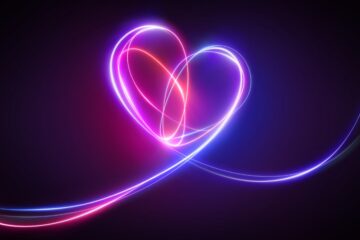Data driven behaviour design: using data to personalise learning
Published by Lily Winslow on
Data-driven behaviour design: using data to personalise learning
Personalisation is a key element in delivering effective learning for employees. Whether it involves teaching desired behaviours or providing timely communication as part of a campaign, the effectiveness of the message depends on how personally it resonates with the audience.
Personalised learning can increase engagement, boost employee satisfaction, and help drive the behaviours you want to see at your organisation.

Why is personalisation important?
When we are considering our strategies for learning experiences, we should first and foremost place ourselves in our users’ shoes and anticipate what we think they need. Even better, we can ask users themselves about their needs before developing learning or comms materials.
Delivering a generic message to all is likely to fall flat. Users have different experiences, priorities, biases, needs and preferences. Plus, they are busy!
To cut through the noise and deliver messages with impact, you need to make it personal. People are more likely to pay attention, and take action, if they see what they personally stand to gain (Riemann & McNally 1995).
Learning experiences need to be personally relevant to the people participating. Each user should know what they need to do, when they need to do it by, and how they’ll benefit from doing it. They should be able to intuitively navigate to, and through, the content that applies to them, and to apply it in the real world in a way that’s relevant to them.

How to personalise a learning experience
The way you personalise a learning experience will depend on the data and user groupings of your users.
Any learning experience we create is a world into which we are asking our audience to step. The worlds we create should be personalised to groups of users. This could be their job role e.g., ‘project managers’, ‘nurses’, or another social identifier like ‘risk taker’ or ‘leader’. When we are at ease in our group we make decisions more easily, trust the information we are presented with more readily, and may be more welcoming to new information.
As well as personalising for groups of users, we can also look at the users as individuals. What progress have they made toward their goals? What are their accessibility needs? Which language would they prefer to experience the content in? What are their priorities?
If you can answer these questions with data, you can create a learning experience that is personal to the user as a unique person as well as a member of a group.
Measure the impact of personalisation
You’ve just developed a personalised learning experience, now it’s time to measure the impact!
When it comes to learning experiences, BestAtDigital follow an evidence-based approach in designing and implementing digital solutions. We rely on proven methods and systems to ensure effectiveness. By analysing the results, you can determine your Return on Investment and make necessary changes to your learning experience to continually make a difference.
There are two simple ways to gain insight into the impact of personalisation:
- Survey your users: ask them about their experience in finding the information they needed and how relevant it was to them. Enquire about how personalised, relevant, and useful the learning experience feels to them. Ask for suggestions on how it could be even more personal.
- Utilise an analytics tool: gather user experience data by tracking the content users are interacting with, how frequently they visit and revisit it, and identify the types of users who are engaged versus those who aren’t. This data provides valuable insights into the impact of personalising a learning experience.
By employing these methods, you can ensure that your learning content is effective, engaging, and tailored to the needs of your audience.
Personalisation creates high impact results
At BestAtDigital, we’ve applied the personalisation approach to both behaviour-driven learning content and front-end platform experiences.
We’ve developed systematic methods that use metadata to group users, and present visual themes, that toggle depending on which group a member is a part of. We’ve customised functionality based on the country a user is in and presented country-specific content. We’ve presented manager dashboards based on data about their team, and we’ve developed content that allows users to ‘pin’ content to a personalised dashboard.
Some of the impacts we’ve seen from implementing a personalised user experience are:
- Clicks to content reduced from 5-10 to 1-2
- 50% reductions in onboarding time
- Improved employee satisfaction scores
- Reporting time reduced from 3-4 weeks to 1.5 hours
- Cultural shift in perception of learning and the LMS
If you’re interested in finding out more about how we develop personalised learning and user experiences, contact us and ask us to show you some of our employee engagement solutions.





